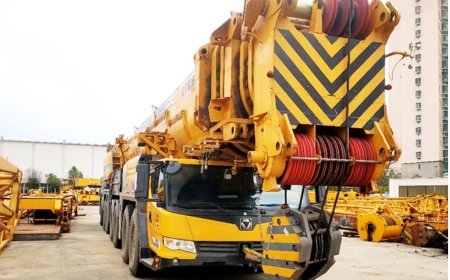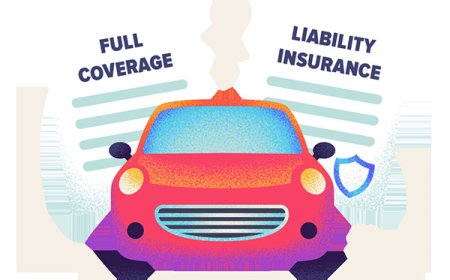Ensure Optimal Vehicle Control with Quality Ball Joints

The suspension system of any vehicle is essential for ensuring a smooth ride and maintaining control. Among the various components that make up the suspension, ball joints play an often-underappreciated but crucial role. These small yet significant parts are the key to allowing your vehicle to handle bumps, turns, and everyday driving conditions effectively. Understanding the function and importance of ball joints in your car's suspension system is vital for maintaining its performance, safety, and longevity.
What Are Ball Joints?
At their core, ball joints are spherical bearings that serve as the connection between a vehicle's steering knuckle and its control arms. These components allow for smooth movement and ensure that the wheels can move up and down while also allowing for the turning motion of the steering system. Essentially, ball joints enable the vehicles suspension and steering systems to work together, providing the flexibility and responsiveness required for safe driving.
There are two main types of ball joints found in most cars: upper and lower. The upper ball joint connects the control arm to the steering knuckle at the top, while the lower ball joint connects the control arm to the steering knuckle at the bottom. Depending on the vehicle, some cars may only have a lower ball joint or both, with each playing a critical role in the suspensions movement.
How Do Ball Joints Affect Vehicle Handling?
The primary function of ball joints is to allow the wheels to move independently from the rest of the vehicles body. This independent movement is crucial for maintaining tire contact with the road while driving. When your car goes over bumps, turns, or rough surfaces, the ball joints absorb much of the stress and pressure that would otherwise be transferred directly to the frame. This gives you better control over your vehicle and ensures a smoother ride.
As ball joints allow the suspension system to articulate, they also help maintain proper alignment of the wheels. If these joints become worn or damaged, it can lead to issues like uneven tire wear, misalignment, and a decrease in overall vehicle stability. For example, worn ball joints can cause the wheels to misalign, leading to difficulty in steering, poor handling, and, in extreme cases, potential loss of control.
Signs of Worn Ball Joints
Like any part of your vehicle, ball joints experience wear and tear over time. As they age or if they are subjected to excessive stress, they can begin to deteriorate. Its essential to be aware of the signs that your ball joints may be failing. Common symptoms of worn ball joints include:
-
Clunking Sounds: If you hear a clunking or knocking noise when driving over bumps or making turns, it could be a sign that the ball joints are worn out.
-
Steering Problems: Difficulty in steering or feeling the steering wheel is loose or unresponsive can indicate problems with the ball joints.
-
Uneven Tire Wear: If your tires are wearing unevenly, it might be due to poor alignment caused by faulty ball joints.
-
Vibrations: A noticeable vibration while driving, especially while turning or steering, can be another sign of a failing ball joint.
If you notice any of these signs, it's important to have your ball joints inspected and replaced if necessary. Driving with worn ball joints can lead to further suspension damage and even compromise vehicle safety.
Why Ball Joints Are Crucial for Vehicle Safety
When it comes to vehicle safety, every component must perform its job to ensure the driver has control over the car at all times. Ball joints play a significant role in this aspect, as they connect key suspension parts to the steering system. If a ball joint fails completely while driving, it can cause the loss of control over the vehicles wheels, leading to accidents. This is particularly dangerous when the failure occurs while turning or navigating rough terrain.
Moreover, ball joints help maintain proper alignment, which is essential for vehicle stability. Misalignment can cause issues such as difficulty in steering, increased tire wear, and reduced braking efficiency. A well-functioning ball joint ensures that the wheels are properly aligned, which translates to better handling, improved braking, and safer driving conditions.
The Importance of Regular Maintenance
Regular maintenance and inspections are crucial for ensuring the continued function of your ball joints. Over time, dirt, debris, and moisture can get into the joint, causing premature wear. Keeping your suspension system clean and regularly inspecting the ball joints can help catch any problems before they escalate.
When performing routine vehicle maintenance, its a good idea to have your suspension system checked, including the ball joints. If you're unsure whether your ball joints need replacement, a professional mechanic can inspect the joints for play (movement within the joint) or wear and tear. Replacing worn ball joints early can help you avoid more expensive repairs in the future, such as damage to other suspension components or misalignment issues.
Choosing the Right Ball Joints for Your Vehicle
Selecting high-quality ball joints is critical for maintaining vehicle performance. While it may be tempting to opt for cheaper, low-quality replacements, doing so can lead to premature wear and failure, affecting your cars performance and safety. Look for reputable brands that offer durable, OEM (Original Equipment Manufacturer) or aftermarket ball joints that match your vehicle's specifications.
When replacing ball joints, make sure to choose parts that are designed to withstand the specific demands of your vehicle. Heavy-duty ball joints are available for trucks or vehicles that carry heavy loads, while standard ones suffice for everyday passenger vehicles. Always consult a mechanic if you're unsure which type of ball joints are best for your car.
Conclusion
In conclusion, ball joints are a crucial component of your vehicles suspension and steering systems. They help provide smooth handling, prevent excessive tire wear, and ensure that your car stays aligned on the road. Regular inspection and maintenance of these parts are vital to ensure the safety and performance of your vehicle. If you experience signs of wear or suspect your ball joints may be faulty, dont delay replacing them. Doing so will keep your car running safely and smoothly, saving you from more costly repairs down the road.








































